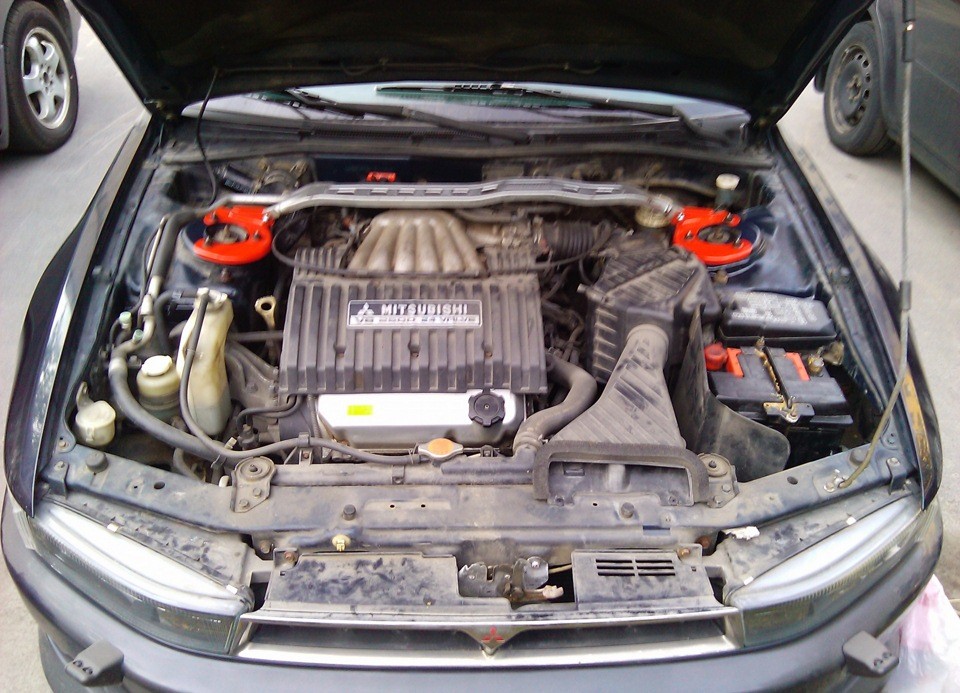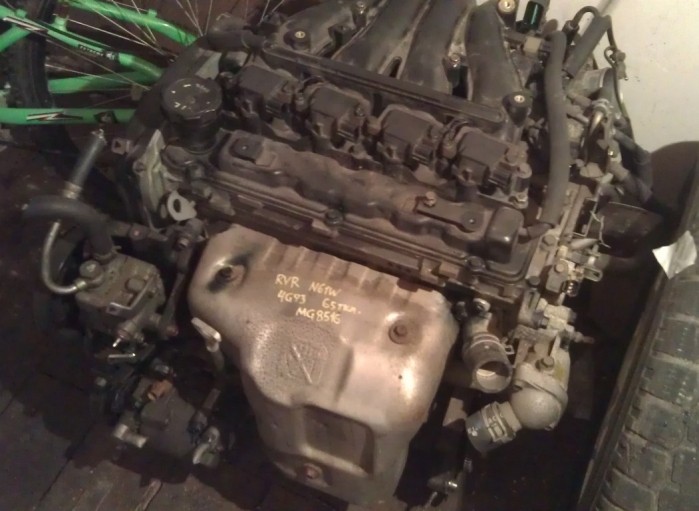
Mitsubishi 4g94 engine
Content

One of the largest representatives of well-known Mitsubishi engines. The working volume is 2.0 liters. The Mitsubishi 4g94 engine is in many ways similar to the 4g93 power plant.
Engine description
In the line of Mitsubishi 4g94 engines, it occupies a special place. This is a large power unit. This displacement was achieved thanks to the installation of a crankshaft with a piston stroke of 95,8 mm. The modernization was extremely successful, which can be judged by a slight expansion - only 0,5 mm. SOHC single-shaft cylinder head, MPI or GDI injection system (depending on the cylinder head version). The engine is equipped with hydraulic lifters, eliminating the need to regularly adjust valve clearances.
The timing drive is a belt that needs periodic replacement every 90 thousand kilometers of the car. During a broken belt, the valves may be bent, so you need to be extremely careful.
Engine malfunctions
A DPRV sensor error called P0340 often distracts Galant owners equipped with the described engine. First of all, it is recommended to test all the wiring from the electronics to the sensor, as well as measure the power to the regulator. The defective sensor is replaced, the problem is immediately solved. For the most part, the DPRV is buggy, although it can be serviceable.

The consequences of the error are quite catastrophic - the motor does not want to start. The fact is that it is this regulator that is responsible for opening the nozzles. It is worth checking whether they open and whether fuel is supplied. At the same time, the high-pressure fuel pump can supply gasoline normally, pump the pump without problems.
Other characteristic errors.
- Knocking is a common engine problem caused by hydraulic lifters. To resolve this problem, parts must be replaced. Be sure to fill in high-quality engine oil so that the situation does not happen again.
- Floating speed is the prerogative of GDI engines. The main culprit here is the injection pump. The problem is solved by cleaning the filter located on the side of the high pressure pump. It is also necessary to inspect the throttle body without fail - if it is dirty, then be sure to clean it.
- Zhor oil is a normal state of affairs for engines with high mileage. The power plant is inclined to carbon formation. As a rule, if decarbonization does not help, caps and rings need to be replaced.
- Hot engine problems. Here you need to check the idle speed controller. Most likely, the element needs to be replaced.
- In severe frosts often pours candles. Therefore, we must try to pour only high-quality oil and fuel into the engine. Regular care and monitoring is required.
Mitsubishi engines have been developed since 1970. In the marking of power units, they put four-character names:
- the first digit shows the number of cylinders - 4g94 means that the engine uses 4 cylinders;
- the second letter indicates the type of fuel - "g" means that gasoline is poured into the engine;
- the third character denotes the family;
- the fourth character is a specific ICE model in the family.
Since 1980, the situation with decryption has changed somewhat. Additional letters were introduced: "T" - a turbocharged engine, "B" - the second version of the engine, etc.
| Engine displacement, cc | 1999 |
| Maximum power, hp | 114 – 145 |
| Cylinder diameter, mm | 81.5 – 82 |
| Add. engine information | Distributed Injection |
| Fuel used | Petrol Premium (AI-98) |
| Petrol Regular (AI-92, AI-95) | |
| Gasoline AI-95 | |
| Number of valves per cylinder | 4 |
| Maximum power, h.p. (kW) at rpm | 114 (84) to 5250 |
| 129 (95) to 5000 | |
| 135 (99) to 5700 | |
| 136 (100) to 5500 | |
| 145 (107) to 5700 | |
| Maximum torque, N * m (kg * m) at rpm. | 170 (17) to 4250 |
| 183 (19) to 3500 | |
| 190 (19) to 3500 | |
| 191 (19) to 3500 | |
| 191 (19) to 3750 | |
| The mechanism for changing the volume of cylinders | no |
| Supercharger | No |
| Fuel consumption, l / 100 km | 7.9 – 12.6 |
| Start-stop system | no |
| Compression ratio | 10 – 11 |
| engine's type | 4-cylinder, 16-valve, DOHC |
| The piston stroke, mm | 95.8 – 96 |
What are the differences between 4g94 and 4g93 engines
First of all, the differences affect the possibility of repair. Any specialist will confirm that 4g94 is less complicated, more convenient in terms of performing a particular operation. There are no balance shafts on it, which makes the engine structurally simpler. However, it is heavily stifled by environmental regulations, as evidenced by the installation of a sophisticated exhaust recirculation system. Therefore, it gets dirty faster - the valves are covered with soot.

The second point: the 4g93 engine is available in several modifications that are quite different from each other. For example, if in 1995 the motor had some features and characteristic “sores”, then in 2000 it was a completely different motor that needed to be re-examined.
On the other hand, if 4g93 were so bad, it would not have been released in different variations for more than 15 years, which, according to statistics, is a good indicator of reliability. And experts agree that 4g93 is one of the best Japanese engines to this day.
These two engines also have a different injection pump. However, this does not stop lovers of various experiments. So, often our Russian craftsmen put a new 4g93 engine instead of 4g94.
- He gets up clearly, like a native.
- The studs on the engine mounts are being replaced.
- The power steering, complete with its parts, must be from an old motor.
- The throttle is needed native, mechanical.
- Replace the flywheel too.
- The high pressure fuel pump pressure sensor chips must be installed from the new engine, cutting off the old ones.
It is noteworthy that the direct injection engine was first installed on the Mitsubishi Galant. It was only then that such a design was successfully adopted by Toyota, Nissan, etc. For this reason, 4g94 is considered a native, characteristic motor for Galant.
Here's what makes it stand out specifically on this machine:
- sustainability;
- economy (if you follow the manufacturer's recommendations, then the engine with automatic transmission will not eat more than 7 liters on the highway);
- good traction;
- reliability (contrary to popular belief).
The INVECS-II automatic transmission paired with the 4g94 proved to be the best. It deftly adapts to the "character" of the engine, makes it possible to manually switch steps.
Video: what to do with engine vibrations on Galant

